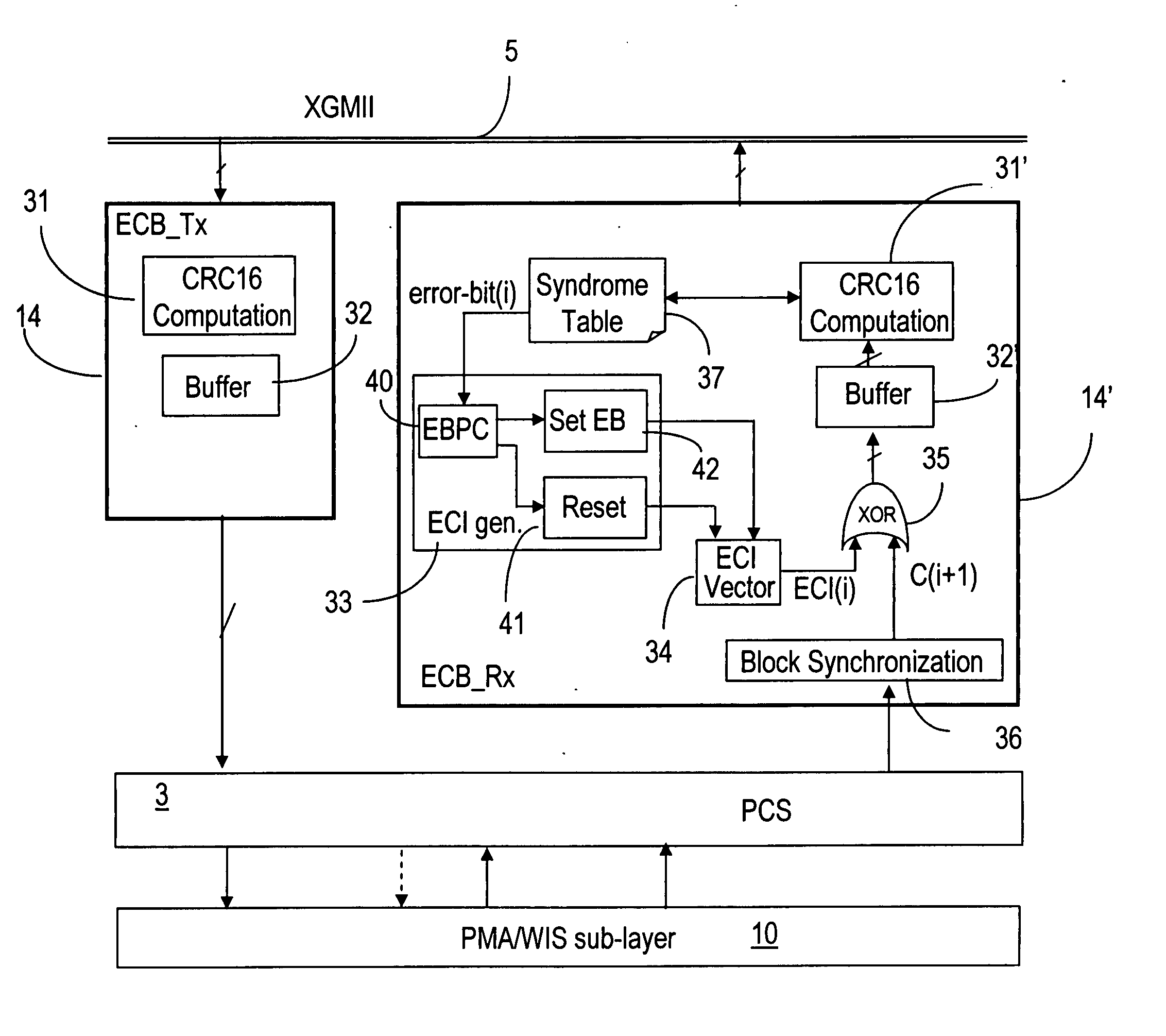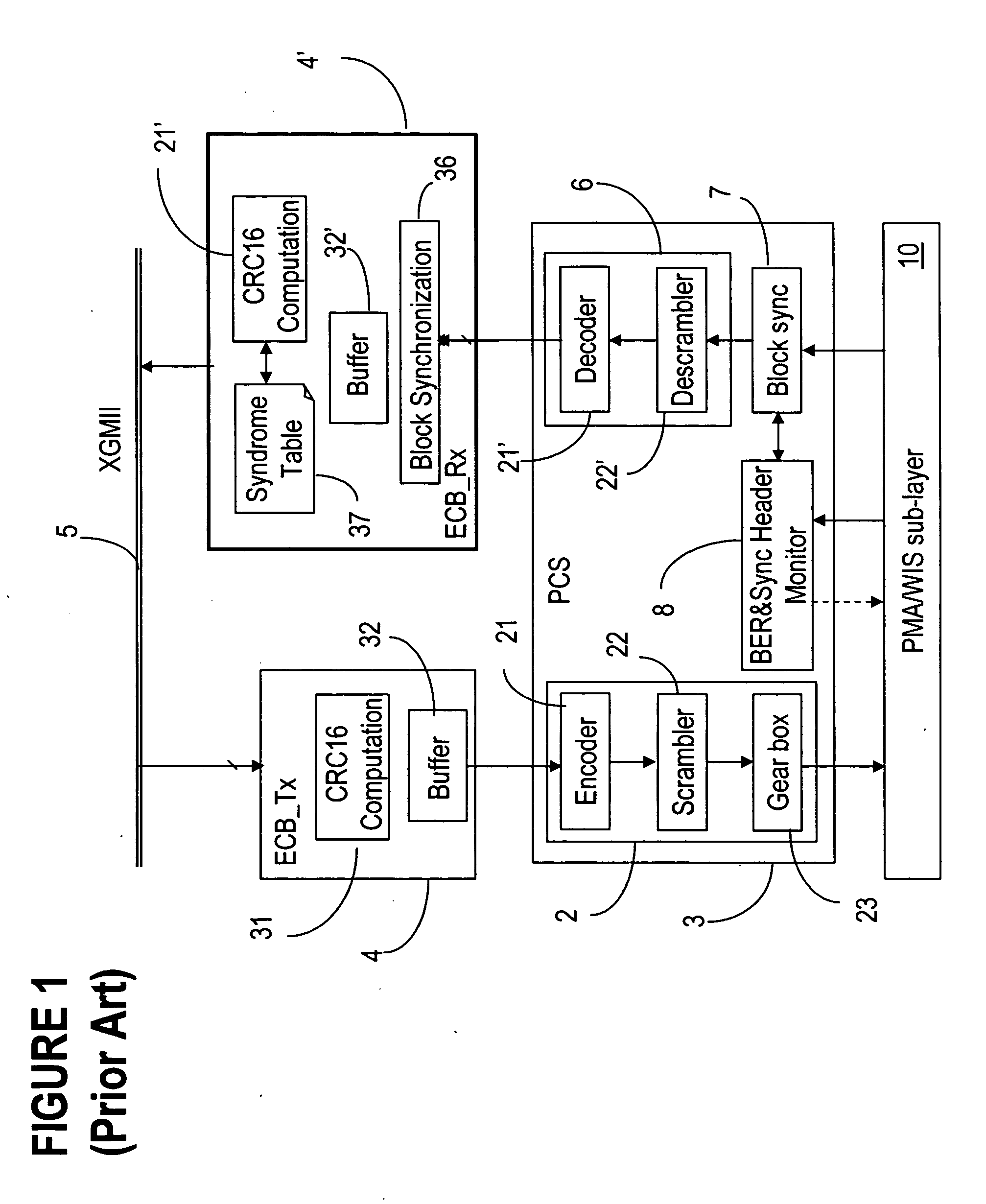Accounting for error carryover in error correction on M-bit encoded links
a technology of error carryover and error correction, applied in the field of error correction in communication networks, can solve problems such as self-synchronous scrambler, duplicate errors, and error duplication at the receiver, and achieve the effect of compounding the gravity of the problem
- Summary
- Abstract
- Description
- Claims
- Application Information
AI Technical Summary
Benefits of technology
Problems solved by technology
Method used
Image
Examples
Embodiment Construction
[0020] Error correction on high speed interconnection links, backplane or extended wires (cable, optical fiber) is strongly considered by many telecommunication vendors, especially those who offer “scalable routers”. 10 GE protocol is a good candidate for high speed interconnection. As such, error correction on 64b / 66b encoded links is an important issue for the other telecom vendors.
[0021] As indicated above, the IEEE 802.3 standard does not provision for error corrections on 64b / 66b encoded lines, whereas the above-identified U.S. patent application Ser. No. 10 / 629,690 presents a mechanism and a syndrome table for uniquely correcting all patterns of single-bit errors. It is to be noted that the following description is illustrative of the principles of the invention and that well known units have not been shown or described in detail to avoid unnecessary obscuring the invention. The general principles described here may be applied to other embodiments and applications, without de...
PUM
 Login to View More
Login to View More Abstract
Description
Claims
Application Information
 Login to View More
Login to View More - Generate Ideas
- Intellectual Property
- Life Sciences
- Materials
- Tech Scout
- Unparalleled Data Quality
- Higher Quality Content
- 60% Fewer Hallucinations
Browse by: Latest US Patents, China's latest patents, Technical Efficacy Thesaurus, Application Domain, Technology Topic, Popular Technical Reports.
© 2025 PatSnap. All rights reserved.Legal|Privacy policy|Modern Slavery Act Transparency Statement|Sitemap|About US| Contact US: help@patsnap.com



